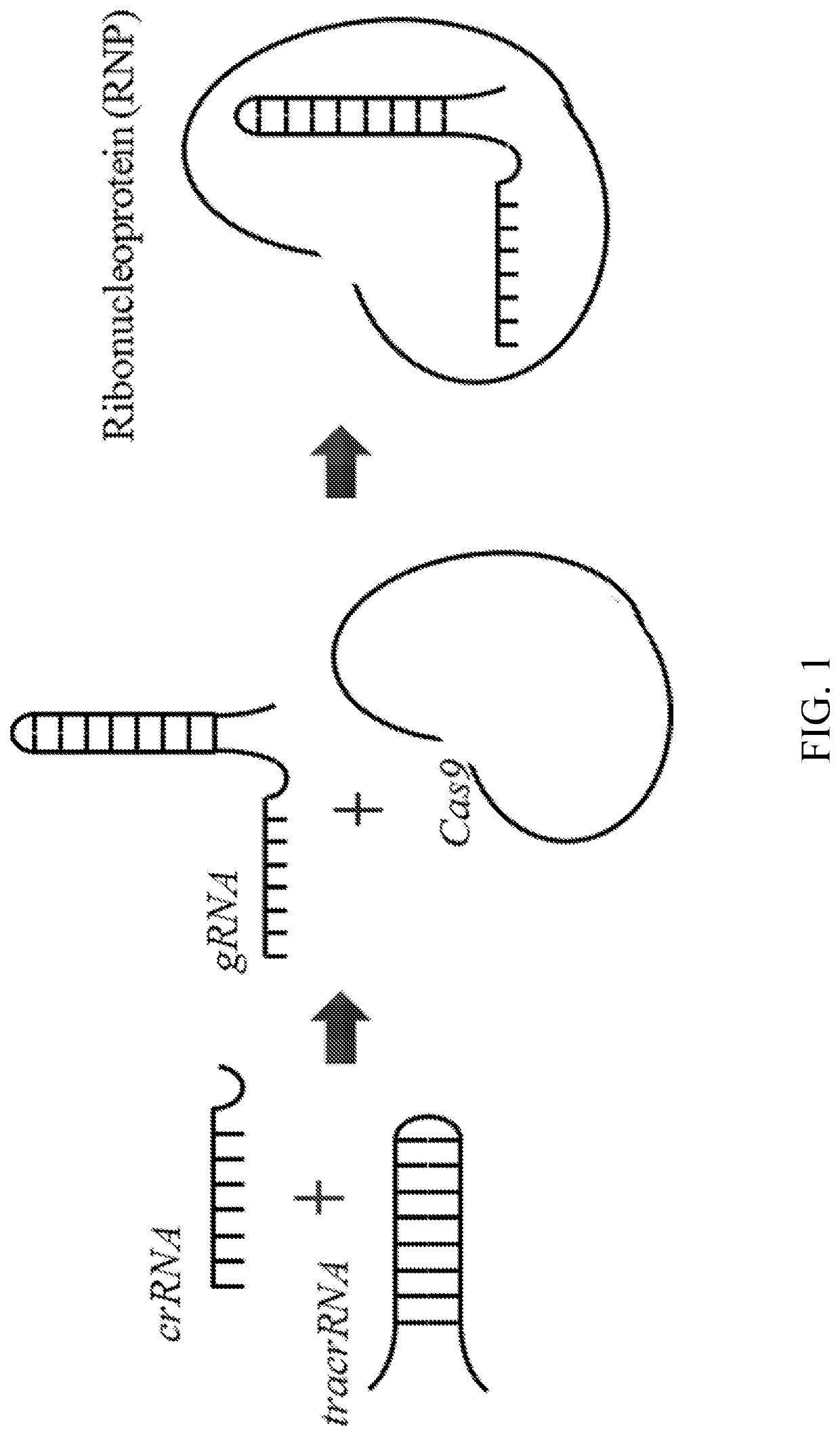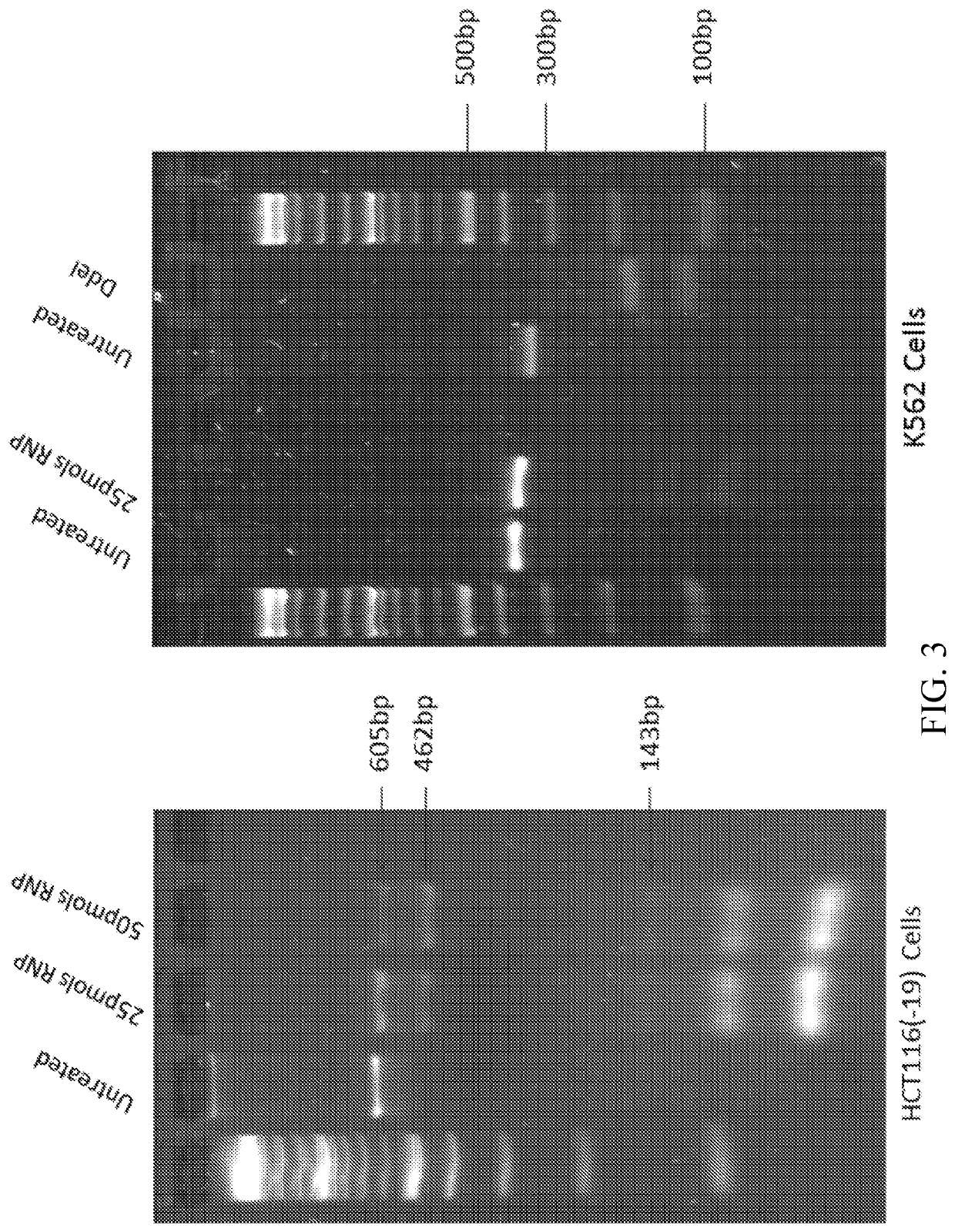Methods for in vitro site-directed mutagenesis using gene editing technologies
a gene editing and site-directed mutagenesis technology, applied in the field of site-directed mutagenesis using gene editing technologies, can solve the problems of time-consuming, multiple pcr steps, and inability to generate mutations in an automated robust manner
- Summary
- Abstract
- Description
- Claims
- Application Information
AI Technical Summary
Benefits of technology
Problems solved by technology
Method used
Image
Examples
experimental examples
[0138]The invention is further described in detail by reference to the following experimental examples. These examples are provided for purposes of illustration only, and are not intended to be limiting unless otherwise specified. Thus, the invention should in no way be construed as being limited to the following examples, but rather, should be construed to encompass any and all variations which become evident as a result of the teaching provided herein.
[0139]Without further description, it is believed that one of ordinary skill in the art can, using the preceding description and the following illustrative examples, make and utilize the compounds of the present invention and practice the claimed methods. The following working examples therefore, specifically point out the exemplary embodiments of the present invention, and are not to be construed as limiting in any way the remainder of the disclosure.
[0140]The materials and methods employed in these experiments are now described.
[01...
example 1
Activity of the CRISPR / Cas9 Assembled Into a Ribonucleoprotein (RNP) Complex on Purified DNA Templates
[0149]For RNP assembly, tracrRNA and (cr)isprRNA were annealed separately followed by addition of the purified Cas9 protein (FIG. 1). RNP assembly conditions and Cas9 were provided by IDT (Integrated DNA Technologies (IDT), Coralville, Iowa).
[0150]DNA cleavage activity of the purified RNP complex is shown in FIG. 2. The reaction is based on the use of a superhelical DNA plasmid molecule containing the eGFP gene, which contains the target sequence designated for cleavage by the RNP. Following the MW marker lane, lane 1 displays purified plasmid DNA in superhelical form. Lanes 2-5 show the products of reaction mixtures containing increasing amounts of the RNP complex. Even at the lowest level, double-stranded DNA cleavage was observed. At the excessive 50 pmol level, DNA cleavage activity is actually blocked due, in all likelihood, to the massive amount of Cas9 protein in the reaction...
example 2
[0152]The initialization and validation strategy of the genetic readout system for the present invention is depicted in FIG. 6. The entire reaction is displayed starting with the assembly of the RNP particle followed by the addition of the single-stranded oligonucleotide, the cell free extract and the superhelical plasmid DNA template which bears the gene target—in this non-limiting example, the eGFP gene. The reaction takes place for 40 to 60 minutes after which the targeted plasmid is isolated using a standard DNA mini-prep protocol. The plasmid population is then transformed into Escherichia coli via the heat shock protocol and the cells plated on agar plates laden with ampicillin. The wild type ampicillin resistance gene is contained within the original plasmid and thus bacterial colonies that grow from a single transformed bacterial cell bearing ampicillin resistance can be selected. Ampicillin resistant colonies are picked, usually 50 at a time and processed for DNA...
PUM
| Property | Measurement | Unit |
|---|---|---|
| volume | aaaaa | aaaaa |
| volume | aaaaa | aaaaa |
| length | aaaaa | aaaaa |
Abstract
Description
Claims
Application Information
 Login to View More
Login to View More - R&D
- Intellectual Property
- Life Sciences
- Materials
- Tech Scout
- Unparalleled Data Quality
- Higher Quality Content
- 60% Fewer Hallucinations
Browse by: Latest US Patents, China's latest patents, Technical Efficacy Thesaurus, Application Domain, Technology Topic, Popular Technical Reports.
© 2025 PatSnap. All rights reserved.Legal|Privacy policy|Modern Slavery Act Transparency Statement|Sitemap|About US| Contact US: help@patsnap.com



